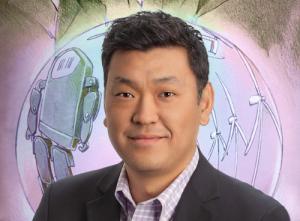Guidehouse
Dan Hahn leads Guidehouse’s Energy Providers practice within the company’s Energy, Sustainability, and Infrastructure segment. As a partner, he oversees a global team of industry and key account professionals that collaborate with utilities and energy companies, providing a broad set of strategy and transformation solutions as they navigate the energy transition. He brings 25 years of experience helping clients transform across multiple industry sectors in the areas of operations, digital, strategy, and technology.
You have a short elevator ride alone with the CEO of a major utility. What would you want to tell him or her?

It's hard to see beyond the current COVID-19 crisis, but our industry has successfully navigated different crises before. As this will be the new reality, and as we return to a new normal, utilities must look to the future.
My advice to utility executives is simple. Be flexible and ready to adapt, focus on your customers, transform your business, and invest now in new Energy Cloud platforms. These emerging platforms unlock new customer value and have the potential to scale faster and yield greater profit margins than the traditional asset-based and supply models.
As these Energy Cloud platforms scale, utilities must embrace a new role - platform orchestrator. We have witnessed significant transformation unfold in the energy sector in the past decade. Today's energy system is cleaner, more distributed, increasingly mobile, and more intelligent.
But we are only at the beginning. Utilities have to further adapt and make different investment decisions as the customers, cities, and communities they serve rely on a partner that can evolve as their energy needs continue to change.
To transform their business, utility leaders need to define a broader customer and sustainability (adaptation) mission and develop a strategic roadmap that guides them as they build the energy system of the future.
This will require making difficult decisions on which strategic initiatives, investments, and divestitures to pursue while facing a higher-risk, more complex, and competitive operating environment.
Innovative new products and services that better meet customer needs and expectations will force the utility to lead. This change requires consistent internal adoption and external engagement with the ever-growing number of stakeholders and partners in their new ecosystem.
Utilities have to define the role they want to play in this new Energy Cloud reality: developer, operator, service provider, solutions provider, or orchestrator of emerging platforms such as Building-to-Grid, Integrated DER, and Transportation-to-Grid.
The utility as we know it will soon cease to exist, replaced by a full-service provider that orchestrates an ever more complex energy system that is not only safe, reliable, and affordable, but also resilient, clean, distributed, and mobile. Such an energy system can instantaneously adapt to its ever-changing environment.
PUF posed a baker's dozen questions about power's future to a similar number of the thought leaders at Guidehouse:
- Dan Hahn — You have a short elevator ride alone with the CEO of a major utility. What would you want to tell him or her?
- Karin Corfee — What major changes have we seen over the last year to the key opportunities and threats utilities are facing? What can utilities do to be better prepared for these changes?
- Erik Larson — Are utilities well-equipped for next generation Energy Cloud business models? What is your view on the industry's readiness? What can utilities do now to be ready?
- Dan Bradley — How will utilities' relationships with their customers change over the next decade? How can utilities get ahead of this?
- Ted Walker — We all hear of "as a service" offerings across many other industries. What does this mean for utilities? What does energy as a service look like?
- Shannon Graham — How are European energy companies positioning themselves in a quickly decarbonizing market? What lessons can be learned from them for U.S. utilities?
- Derek Jones — Approximately one-third of energy use in the U.S. is for transportation. How can utilities tap into this market in a significant way?
- David O'Brien — What are the major regulatory changes you see in the next decade? What is needed from regulators to optimize outcomes for all stakeholders?
- Margot Everett — What are the major changes to how utilities should approach rate design over the next decade to deal with challenging industry dynamics?
- Michelle Fay — What will the utility of the future look like in 2030? How will it be different from today's utility?
- Rick Rodman — How has risk management changed for utilities? What can utilities learn from other industries?
- Jenny Hampton — How can utilities use design thinking to develop game-changing innovations? What lessons can be learned from other industries?
- Danielle Vitoff — What role can utilities take in their customers' quest to decarbonize? How have we seen utilities shifting more decarbonization choices to their clients?


